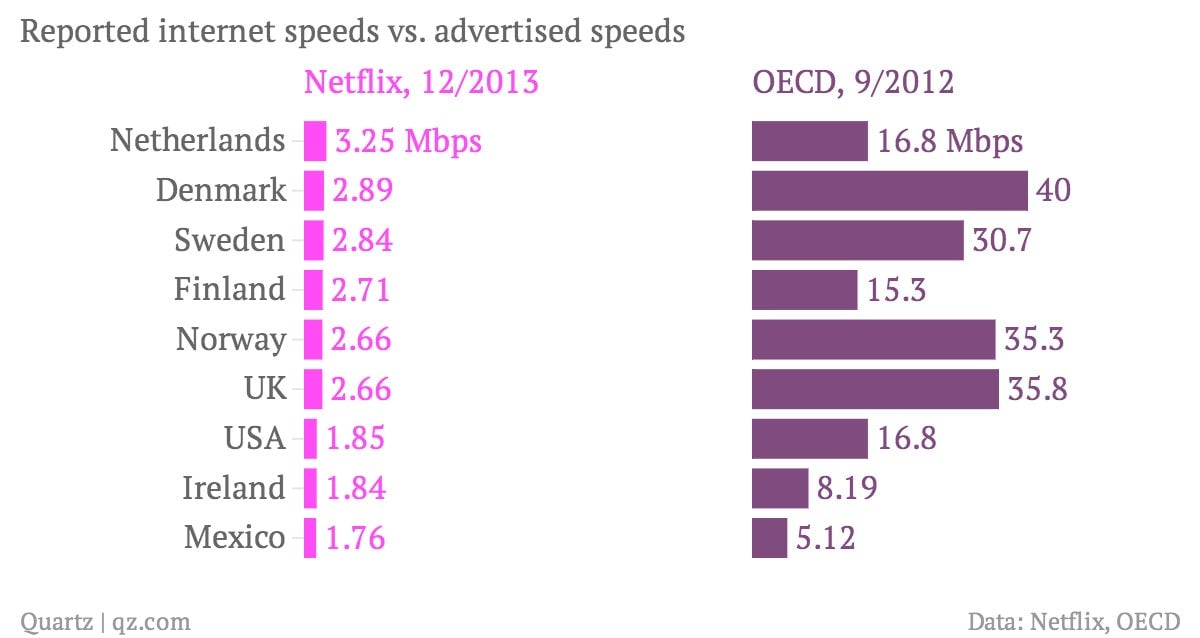Yes, your internet connection is slower than advertised
Netflix has updated its public data on how fast it streams movies to customers around the world. Viewers in the Netherlands see their movies with the best quality, at an average rate of 3.25 megabits per second, while Mexico comes in the slowest with an average of 1.76 Mbps.

Netflix has updated its public data on how fast it streams movies to customers around the world. Viewers in the Netherlands see their movies with the best quality, at an average rate of 3.25 megabits per second, while Mexico comes in the slowest with an average of 1.76 Mbps.
But that’s nowhere near as fast as internet service providers promise customers. The OECD, an organization of wealthy countries, surveyed top broadband providers in 2012, and reported their median advertised speed, shown in the second column above. Judging by Netflix’s data, the bandwidth consumers actually receive is much less than what they are promised.
Of course, we shouldn’t be too surprised: The lawyers at the telecoms generally note in the fine print that actual performance may vary. Streaming video like Netflix also doesn’t capture all types of internet traffic. Still, this is a meaningful metric—Netflix is among the reasons that people actually pay for broadband. (Streaming Netflix movies make up 33% of US web traffic at peaks times, for instance.)
In the United States, at least, the FCC says the average US internet service provider delivers 96% of the speed advertised during peak hours. But at the same time, most Americans use internet connections that should provide better performance:

The question of how much bandwidth you are getting when you pay your internet service provider is about to get even trickier, at least in the US, where a court decision today struck down “net neutrality” rules that would prevent internet service providers from discriminating against different kinds of traffic on its networks. If internet companies and open internet activists can’t convince the government to implement some version of net neutrality, your future cable bill might just have a Netflix surcharge!